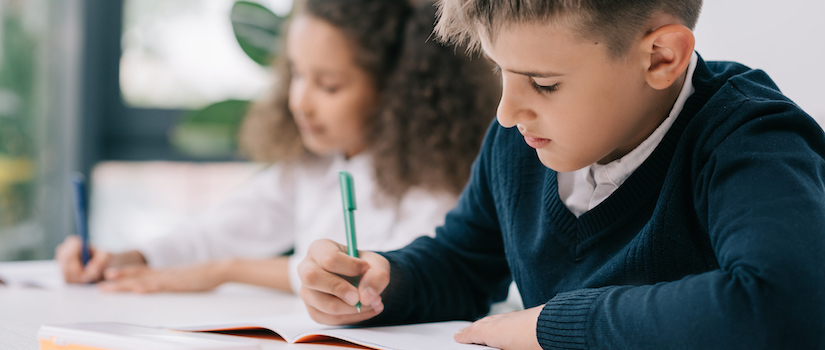Articles & Videos
Mental computation: How do your students measure up?
Categories
Subscribe to our newsletters
Receive teaching resources and tips, exclusive special offers, useful product information and more!
Back to Assessment articles & videos
Mental computation: How do your students measure up?
Think Mentals 4/10/23

Assessment is on everyone’s mind at this time of year. Assessing mental computation skills is a valuable part of reporting on your students’ overall maths abilities.
Like every other area of assessment, it’s important to draw on multiple methods to determine a student’s competency. Here are three ways to assess your students’ progress and thinking when it comes to mental computation.
1. Review weekly assessment results
Think Mentals includes a weekly assessment task on Day 5 that contains two sets of questions. The first set assesses students’ understanding and application of all the strategies learned, while the second set tests content across all strands.
If you’re using Think Mentals Student Workbooks, ask students to record their results throughout the year in their Student Assessment Profile located at the back of their books. If you’re using Think Mentals Digital, results are automatically collated in their Student Portfolio. Either way, the Student Assessment Profile allows you to see at a glance:
- a student’s overall improvement throughout the year
- whether a student is struggling with – or excelling at – a specific strategy.
2. Conduct interviews
Interview each student. Ask them to tackle a selection of mental maths questions and explain how they arrived at the answers.
You can ask the student to work through each question in their head and find the answer before they articulate what they did. This allows the student to tackle the question without interruption and then reflect on the strategy used.
Alternatively, you can ask the student to articulate the mental computation strategy they are using while they work through the question. This reveals whether the student is starting with one strategy and switching to another more efficient strategy as they go. It can also reveal whether a student is relying on only one strategy instead of using the best strategy for each question.
3. Observe fluency
Fluency and mental computation go hand-in-hand. For a student to be a good mental strategist, they need to be effective (apply the best strategy), accurate (arrive at the correct answer) and fast (recall a strategy quickly).
Your student interviews will provide some indication of their level of fluency, but the best way to observe a student’s fluency is to see it in action.
Walk around the classroom while students are completing their Day 5 Assessment task. Observe how effective and fast students are at solving the first set of questions, which target and revise the Think Mentals strategies learned during the year.
Encourage students to use a notepad for jotting as they work through problems. Jotting gives you insight into students’ thought processes for each question.
Speed is a key indicator of fluency in mental computation because it demonstrates not only how fast a student solves a problem, but also whether they are using the best strategy for that problem. In the Think Mentals Student Workbooks, the daily Practice, Revision and Assessment tasks include a My Time section where students can record how long it takes them to complete all the questions. Most students will correctly solve a problem, so comparing students’ times is useful for differentiating an A student and a B student.
When used collectively, these three assessment methods will provide you with an insight into each student’s mental computation skills – valuable information to share with parents and next year’s teacher.